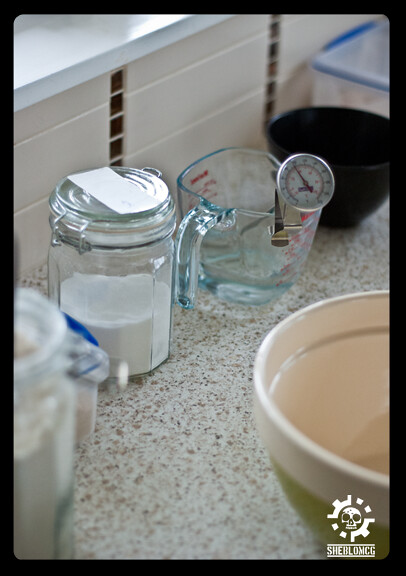Hi
A while back I baked a raisin and rosemary loaf and it came out quite well, and the flavour was quite excellent. I have only been baking for a year now and from that year I have gather one opinion. I have still lots to learn.
So I am going back to basics. Just have one simple recipe and tweak that recipe to learn all the ins and outs of getting a decent loaf of bread. Don't get me wrong I will be baking with different recipes that I find here on fresh loaf and in Various books. My major aim though is to stick with one basic recipe and learn all the ins and outs. What temperature to bake at, when to add the salt, what temperature the water must be, how long to proof the loaf, what will happen if I have a high hydration loaf, etc
This is all in aid for me to learn and know when and where certain elements will happen. So that it will be less hit and miss if it going to be a good loaf and be more certain that a loaf will come out how it should.
The basic recipe I will be following is the same one from the lesson found on this website [LINK]
3 cups of all purpose flour
2 teaspoons of yeast
2 teaspoons of salt
1 1/8 cup water
In the loaf I will be showing today I have added about 1/4 cup of raisin and 2 Tablespoons of rosemary. I just love the combination of these two ingredients.
So now for some pictures:
As always start with the recipe:

Then the required utensils and ingredients [I do all my bread baking by hand as I do not have a mixer of yet]

Add the Yeast to the warm water to activate

Add the flour, at this point I have held back the salt and let the flour and water and yeast sit for about 10min to Autolyse

I then add the salt and then Knead for 10 - 15 min, I then leave the dough to rest for about 15 min

While the dough is resting I cut up the fresh rosemary to be added to the dough

I then add the raisins and rosemary and knead for another 5min. I then tighten up my boule and let proof for about 45min. I then fold the dough and least proof for another 30min

After it has proofed, I then punch down and reshape into the final boule shape.
I preheat my oven to 230c and place in my pizza stone to heat up as well. I also place an old roasting dish to water up at the bottom of the oven.
Once the loaf has been proofing for about an hour, I place the boule onto the pizza stone and slice in a cross. As I place boule in the oven I reduce the heat to 200c and though some ice blocks in the heated roasting dish to create steam.
I bake the loaf for about 15min then turn the loaf and back for a further 10 - 15min.
and here is the end result:

and crumb

I am quite happy with how the loaf came out, the crust was nice and crispy and the flavour was good. I think the crumb is still a bit dense and spongy. This might be due to the salt being added later. Aslo it looks like it "blew out on one side, I am not sure why this happen, maybe my slicing was not up to par.
Next I will try this recipe without the raisin and rosemary and try it with out the autolysis and a different slicing pattern and see what will happen. Hopefully this will rectify some of the issues that I have had.
Please let me know what you think or if I must try something out at different stages of my bake.
Thanks
Please excuse any spelling or grammar mistakes, it is not my strongest strength.
I have also submitted this post to YeastSpotting : http://www.wildyeastblog.com/category/yeastspotting/













